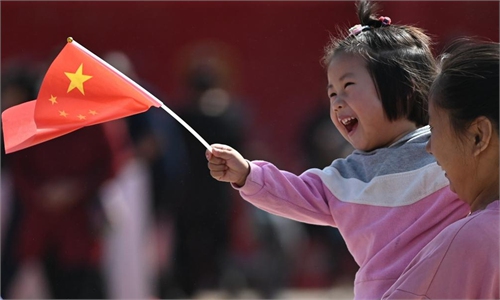SOURCE / PRESS RELEASE
Healthcare, a two trillion-dollar business

Healthcare market
There is no doubt that there is an available market; it is huge and set to expand at a rate unheard of in the West. This is confirmed by the figures of Dezan Shira, one of the most highly regarded research companies that have offices both in Italy and China. According to one of their latest reports for 2024, demand for health services is considerable, driven by an aging population and lifestyle changes, resulting in an increase in chronic diseases across all age groups. China's healthcare market is expected to expand from around 900 billion dollars in 2019 to 2.3 trillion dollars in 2030, second only to the US. In particular, the market for digital health is expected to grow at an astounding 12.3 percent CAGR (compound annual growth rate) from 2023 to 2028, reaching 82 billion dollars.
The elderly care sector will generate 800 billion dollars in revenue by 2025 and exceed 3 trillion dollars by 2030. The biopharmaceutical segment is tripling from 47 billion dollars in 2020 to 111 billion dollars by 2025. These figures will be supported by the new economic support measures with which China aims to increase consumption and investment: the fiscal stimulus would amount to about seven billion dollars in the form of tax credits and direct government subsidies, plus about 20 billion dollars in soft loans at an interest rate below two percent.
Regarding investments, the Chinese government hopes to increase them by 25 percent by 2027, from 609 billion euros in 2023. Among the sectors that will profit from this stimulus plan is the health sector. Furthermore, the governnment has recently opened up to the inflow of foreign capital into the industry even more, specifically in the management of hospitals. Italy is already benefiting from this trend because China is the seventh destination of Italian exports of medical devices, for a total of 160 million euros. According to Istat data, last year, the Italy-China pharmaceutical trade was worth 5.2 billion euros, compared to 700 million in 2017. The percentage of Italy-China trade in total pharmaceutical trade with non-European countries has increased in 2023 to 20 percent from seven percent in 2013.
According to Eurostat, in 2023 Italy was the first EU trading partner of China for pharmaceutical products, ahead of Germany, the Netherlands, Belgium, and France. And this year the trend is growing: according to Ice, an Italian trading agency, the export of pharmaceutical products from Italy to China from January to July 2024 has exceeded 1.8 billion dollars (from 1.55 billion dollars in 2023 and 1.44 billion dollars in 2022), with a projection at 2.7 billion dollars at the end of the year.
Interesting numbers, but they are still a drop in the sea; however, it is still enough to attract a large group of Italian companies in the healthcare sector, also extended to consulting companies and those who design hospitals.
The six Italian companies that were operating in China 10 years ago have multiplied by 10. These include the pharmaceutical companies Alfasigma, Bracco, Chiesi, Dompé, Menarini, Recordati, Zambon, and Diasorin; additionally, Amplifon, a manufacturer of curative hearing devices has the largest sales network in Asia, with 200 stores in China, while Esaote, an advanced diagnostic equipment producer, gains market share. At the last China Medical Equipment Fair 2024, in April, there were 12 innovative Italian companies that showed their confidence in the potential of the Chinese market.
But for an Italian industry that has more than 4,400 companies active in this sector, often with technologies recognized as cutting-edge solutions by the market, they are really too few. What more needs to be done? Experts emphasized the importance of creating a system, which can range from institutional support for Italian pharmaceutical and instrumentation (including robotics) companies wishing to export to China, to assistance for those who have taken the "step" of investing in a local structure that can expand successfully in that market.
Nevertheless, there is no shortage of success stories among Italian operators, and they point the way forward. One of the most striking is that of Bracco. And Diasorin is also reaping the rewards of a long effort. The company of Saluggia, in the province of Vercelli, has been operating in China since 2005 through a joint venture that also involves the Chinese government and serves hundreds of hospitals in the most important regions and cities of the country.
The industrial strategy adopted by Diasorin in China is to relocate production, in line with the government's directive that tests intended for the Chinese market must be produced locally. In 2019, construction work began on the first manufacturing plant in Shanghai, "China for China," which was completed with an investment of 40 million euros and will employ more than 200 people.
Production is currently scheduled to start by the end of 2024, and the first test to be carried out and marketed will be for the diagnosis of thyroid diseases. Other diagnostic tests in the gastrointestinal field will follow in differential diagnosis of IBD (Inflammatory Bowel Disease) (IBS) and latent tuberculosis. With the new facility, Diasorin aims to become a local manufacturer of high-quality diagnostic tests, accessing new market opportunities reserved for local manufacturing companies.
China is aspiring to become one of the world's largest medical markets within a few years, with health spending already increasing by 15 percent on an annual basis, Carlo Rosa, CEO of Diasorin, added. In the Chinese market, Diasorin is focusing on two clinical areas, gastrointestinal specialties and latent tuberculosis, which has a high incidence in China, where it is working in partnership with a local operator, Qiagen.

